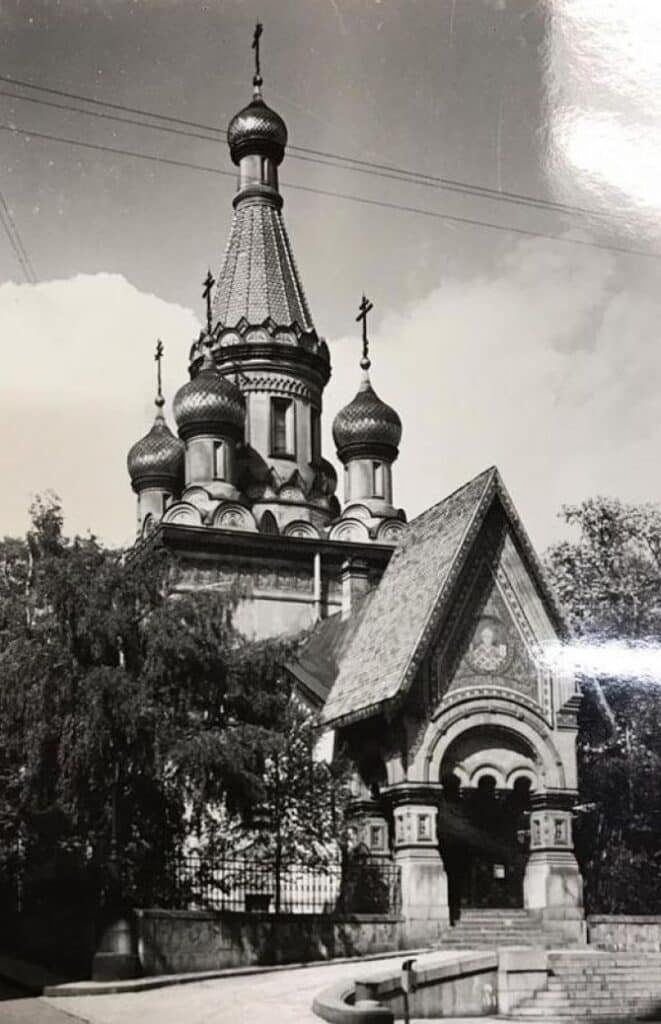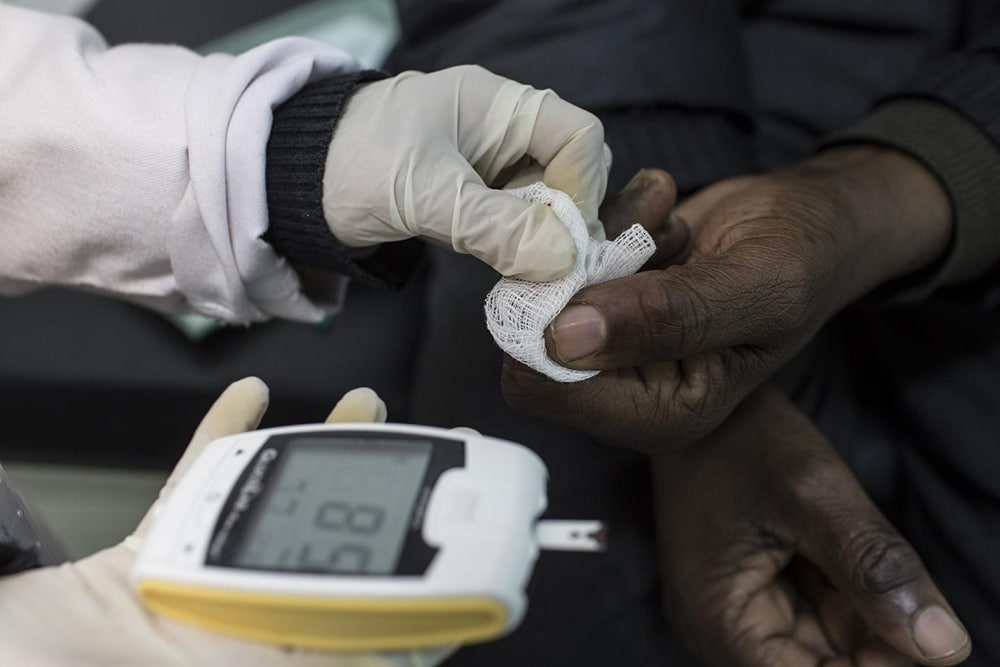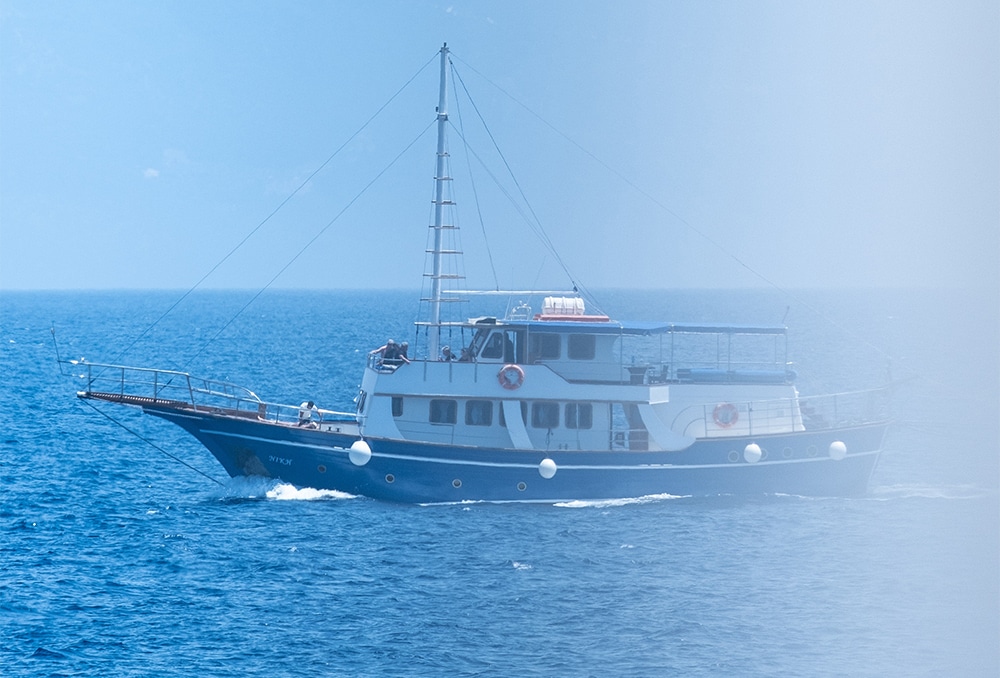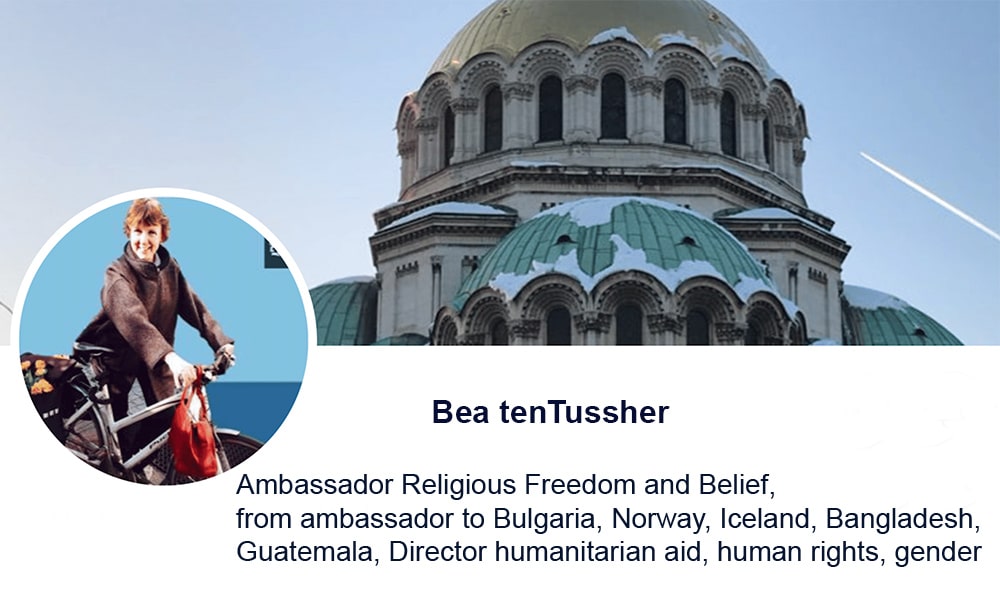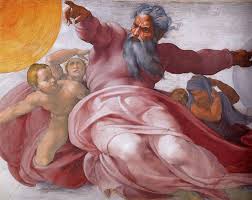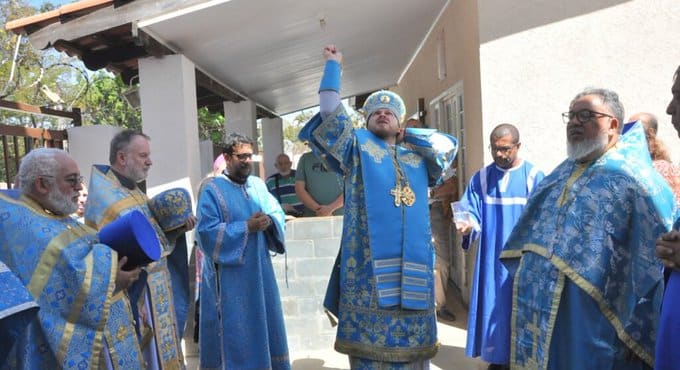When and how the temple was created
The foundation stone of the future church “St. Nicholas the Wonderworker” was laid by Grand Duke Vladimir Alexandrovich (son of Emperor Alexander II), who arrived in Sofia especially for this purpose together with his wife and son. On August 30, 1907, they took part in the solemn consecration of the monument to the Tsar Liberator, a creation of the Italian sculptor Arnoldo Zocchi, and on September 2, 1907, the solemn laying of the foundations of the ambassador’s temple took place. The ceremony was attended by Bulgarian officials – members of the Bulgarian Synod, Crown Prince Boris, and also representatives of the Russian legation, headed by Ambassador Sementovski-Kurilo and a large deputation of the Russian regiments that fought for the liberation of Bulgaria. The ceremony of consecration of the future temple in honor of St. Nicholas the Wonderworker was performed by Metropolitan Parthenius of Sofia.
It was decided that the ambassador’s church would be built in the style of the Moscow church architecture of the 17th century according to the project of the recognized artist academician Mikhail Timofeevich Preobrazhensky (author of the Orthodox cathedrals in Nice, Florence and many others). The construction was supervised by another Rusyn – the architect Alexander Smirnov, who also showed the best qualities in the field of church construction. Under his leadership, for example, in 1902, the magnificent church-monument “Nativity of Christ” was built in Shipchen Pass; he also supervised the construction of the temple-monument “St. Alexander Nevsky” in Sofia. Smirnov undertook to build the temple in accordance with the projects and detailed drawings, calculations and accounts made by Preobrazhensky. The work on the construction of the temple is monitored by a specially created construction and economic commission under the personal leadership of the ambassador, which includes employees of the Russian legation and the vice-consulate in Sofia. In 1911, for example, in addition to Ambassador Neklyudov, Prince Urusov, Military Attache Lieutenant Colonel Romanovsky, and Vice Consul Jackeli worked in the commission. The commission’s duties also include financial control. The preserved documents testify to a very responsible attitude of the members of the commission towards the construction works: as good businessmen, they do not allow waste of funds, but at the same time they take care of the high level of all the activities carried out. One cannot fail to note the fact that both architects and artists demand a very moderate payment for their work, considering it an honor to participate in so noble a work.
In the spring of 1910, by order of the Russian Tsar, an additional 75,000 francs were allocated for the completion of the construction work and for the interior decoration of the temple, because the initial calculations were made several years before at lower prices and did not include the costs of internal decoration. In general, the construction of the temple was completed in 1911. At that time, a real “Russian corner in Sofia” could be seen near the royal palace: an exquisite church surrounded by birch trees, connected by a beautiful avenue to the building of the Russian legation, a real masterpiece of the “Russian style” in church architecture.
Rising on a hill, the temple, whose height from the base to the cross of the central dome is 35 m, is well visible from all sides. The basis of its construction is formed by a quadrangular building – a “quadruple”, to which four protrusions are attached: an altar apse in the eastern part, an apse with an elevation for people in the western part and two naves – north and south, to which two entrances lead – from the garden of the legation and from Tsar Osvoboditel Blvd. The operational entrance was the northern one, to which a door connecting the temple with the territory of the legation led. On holidays, one entered through the southern portal, in front of which a semi-oval platform was made for crews. It is surrounded by an exquisite wrought-iron lattice, and on both sides of the entrance lanterns are hung on cast-iron pillars with images of double-headed eagles – a skillful creation of Tula craftsmen. The gable roof covered with green, glazed tiles above each entrance is artfully styled as an old Russian “terem”. The pediments of the southern and northern portals are decorated with majolica images of St. Nicholas the Wonderworker and St. Alexander Nevsky. Above the northern one is a small belfry with eight bells.
The temple is five-domed: the central dome crowning the tent-shaped turret is surrounded by four decorative domes with gilded “onion” tops. Each is surmounted by a wreath of hemispherical “kokoshniki” inlaid with multi-colored tiles, and surmounted by a Russian octagonal cross. The wide frieze encircling the upper part of the “Quad” is formed of tiles with a relief ornament. One look is enough to understand that this is a Russian temple.
For two years, work was done on the interior decoration and painting – they were made by a group of Russian artists, simultaneously painting the church “St. Alexander Nevsky”. They are led by the experienced master of church painting Vasiliy Perminov, a professor at the Warsaw Polytechnic institute. Before the artists is a task assigned to them by the Russian authorities: the church “to be in this country related to us a worthy monument of Russian art, corresponding to the meaning of the Russian name and everything connected with it”.
The interior decoration of the temple “St. Nicholas the Wonderworker” is a magnificent example of Russian icon painting from the modern era. The enthroned image of the Mother of God with the Child, surrounded by the Heavenly Powers, located in the altar, is expressive. The composition is crowned with an image of God the Father on the hemispherical vault. On the southern wall of the temple is depicted the crucified Christ with the saints to come, below it in Church Slavonic letters is written a quote from the liturgical chant of Great Saturday: “Let all flesh be silent.” On the north wall we see the composition “Deisis”, on which is depicted Christ – the Great Hierarch, to whom the Virgin in royal robes and St. John the Forerunner are praying, and below them – a host of saints, personifying the Triumphant Heavenly Church. On the vault of the western apse is depicted Jesus Christ “in glory” above a host of Russian saints. Later, the northern nave of the church was decorated with the composition “Resurrection of Christ”, painted by the great master of church painting, the Russian émigré artist Nikolai Rostovtsev. The large icons in the south nave also belong to his brush: of the Blessed Virgin Mary, St. Nicholas the Wonderworker, the miracle workers Rev. John of Rila, Rev. Sergius of Radonezh and Rev. Seraphim of Sarov.
Magnificent is the single-row majolica iconostasis with a floral ornament on a golden background, on which icons of the Savior, the Mother of God and St. Alexander Nevsky are placed – wonderful copies of the icons, the work of Viktor Mikhailovich Vasnetsov, from the cathedral “St. Vladimir” in Kyiv. The temple icon of St. Nicholas the Wonderworker is a copy of the icon kept in the same cathedral – the work of Mikhail Nesterov. It is no accident that artists turn to these masterpieces of Russian icon painting – it is a reminder of Russia, a call to fervent prayer for her.
On July 5, 1912, on his imperial yacht “Standart”, Nicholas II placed on the text of the law on the state of the employees of the Orthodox Church to the Imperial Russian Legation in Sofia a resolution: “Let him be”. The deacon from the Viennese Russian Church Pyotr Preobrazhensky, ordained at that time as a priest, was appointed as the first priest, and Nikolay Makarov, transferred here from Yambol, where he served in the Russian memorial temple “St. Alexander Nevsky”. The Russian ambassador proposes to leave one of the places for church ministers vacant, so that the funds saved in this way can be used to support a “decent choir of at least 16 people” who “must be a model of strictly maintained church singing.” There is no need to invite a choir conductor from Russia, since the legation’s dragoman (interpreter) P. Kiryakov takes care of organizing a four-part mixed choir.
Arriving in Sofia, the prefect decided that the temple was not ready enough to be consecrated and opened for public worship. His objections were caused by a part of the temple zography which, in his opinion, did not correspond to the church canon, which he reported in a letter to the Ministry of Foreign Affairs in October 1913. The final completion of the temple was also delayed because, from the very relations between the head of the Russian Legation and the head of the Russian Legation, Savinsky, began to strain. On February 5, 1914, he appealed to the Ministry to recall Preobrazhensky because he was “rude” with him, “involved in politics and likes to talk with Bulgarians on political subjects’ and in his manners is ‘absolutely unfit for foreign service at all’. His request was granted, and in March 1914 Archimandrite Nikolay (Drobyazgin), who had served in the churches in Baden-Baden and Karlsruhe, was appointed head of the church in Sofia, and Preobrazhensky was sent in his place. At the same time, the temple is being prepared for consecration: liturgical books, cloth for the altar and items of the church utensils specially ordered from the industrial association “Sons of PI Olovyanishnikov” have been delivered from Russia. The icons were made in the factory of I. A. Zheverzheev. A little later, the Cabinet of His Imperial Majesty handed over to the temple an analog icon of St. Nicholas, gifted by the emperor, with gilded silver fittings, decorated with precious stones, in an oak casket.
On September 11/24, 1914, in front of a large number of people, in the presence of the head of the Russian legation Savinsky and diplomats from countries friendly to Russia, the church was consecrated by Metropolitan Basil of Dorostolo-Cherven, replacing the seriously ill head of the Bulgarian Church at the time – Exarch Joseph. The proto-single of the exarch, Archimandrite Stefan (subsequently Metropolitan of Sofia, and in 1945-1948 exarch of Bulgaria), the head of the temple, Archimandrite Nikolai, and also the Russian hieromonk Juvenalius and the Bulgarian hieromonk Khariton, served with him. The choir of the cathedral “St. Sofia” under the management of N. Nikolaev.
The fact that the Russian church was consecrated by Bulgarian clergy in conjunction with the Russian one is an event of great importance. As early as 1872, the Patriarchate of Constantinople refused to recognize the independent Bulgarian Exarchy created shortly before, declared the Bulgarians to be schismatics-dissidents and excommunicated them from the church. Although the Russian Church did not join this decision, it nevertheless, not wanting to complicate its relations with Constantinople, refrained from liturgical communion with the Exarchate. In 1914, for the first time after the proclamation of the Bulgarian Exarchate, the Russian Synod appealed to the head of the Bulgarian Church with a request to personally consecrate the Russian church in Sofia, which testifies to the desire to restore canonical communion. Bulgarian Exarch Joseph calls this event “the beginning of the fraternal union of the two Orthodox churches”. In telegrams sent to Emperor Nicholas II and Metropolitan Vladimir of Petrograd, he thanked the Russian Church for the outstretched brotherly hand. After the Divine Liturgy, Archimandrite Stefan addressed the gathered with an excited speech: “… We will live in like-mindedness and love in complete fraternal love and unity.” Taking a large part in the consecration of the Russian ambassador’s temple, the Bulgarian public, for its part, shows its attachment to the spiritual ties with Orthodox Russia in the days when the fires of the First World War are lit and it is already obvious that Bulgaria and Russia will find themselves in this conflict from different sides of the front.
Orthodox faith and religiosity are the most important element of the worldview and self-awareness of the majority of people in pre-revolutionary Russia. In exile, faith acquires even greater importance for them: it gives the refugees comfort, strengthens the spirit, instills hope. The numerous Russian colony in Bulgaria is oriented towards the temple, strives towards it, expects spiritual guidance and instruction from there. Bishop Seraphim managed to make the temple “St. Nikolay” hearth and center of the Russian community in Sofia.
Above all, Bishop Seraphim took up the organization of the church parish. In September 1921, in accordance with the parish statutes adopted at the Local Council in Moscow (1918), he established a Russian commune at the temple of the Russian legation in Sofia. The bishop himself was elected chairman of the municipality, his deputy was the member of the High Church Council Raevski, and the secretaries were Shurupov and Colonel Lisovski. In addition to them, four priests serving in the temple were elected to the parish council: Protopresbyter Georgi Shavelski, Archpriest Vasily Florovski, Archpriest Alexander Rozhdestvenski and Hieromonk Sergiy (Sobolev), as well as nine laymen. Among them are General Artsyshevsky, plenipotentiary of the All-Russian Union of Cities, dealing with organizing the Russian educational work; Prof. Pogorelov, paleographer, compiler of a systematic inventory of Bulgarian medieval manuscripts; General Romanovsky, head of the administration of the Wrangel military representation; von Feldmann, proxy of ROKK; Princess Trubetskaya. On September 8/21, 1921, the parish council took possession of the church and its ecclesiastical property as a trustee.
The other issue that requires an immediate solution is the question of relations with the Bulgarian Church, which at that time was under schism. In December 1921, the chairman of the Council of Ambassadors in Paris, Girs, appealed to the ruler of the Russian Orthodox Churches in Western Europe, Archbishop Evlogiy, with a request to settle church relations between the Russian and Bulgarian priests, but he received a negative answer. Bishop Seraphim’s position as a bishop on the territory of another local church, which is also under schism, greatly complicates his activities in Bulgaria. By preparing a detailed report on the Bulgarian church life, he submitted the relevant petition to the Synod of Bishops of the Russian Church Abroad and, with its blessing, became the first Orthodox bishop to enter into Eucharistic communion with the Bulgarian Exarchate during the schism period. Thus, the line in the relations of the two churches, the beginning of which was established during the consecration of the Russian temple in 1914, was continued.
On January 9, 1923, on the day of the memory of St. First Martyr and Archdeacon Stephen, in the Russian church “St. Nicholas” Bishop Seraphim and the proto-single of St. Synod – Bishop Stefan of Marcianopol – celebrate a joint liturgy: the way to overcome the canonical obstacles in the relationship of the two churches is paved. In September 1924, the Bulgarian and Russian bishops from the Russian Abroad Synod jointly celebrated divine liturgies at the consecration of the three thrones of the temple-monument “St. Alexander Nevsky” in Sofia. Subsequently, Bishop Seraphim repeatedly served joint liturgies with the Bulgarian clergy, participated in the ordination of Bulgarian bishops. The bishop’s contribution to the restoration of canonical communion between the two churches was highly appreciated by Tsar Boris, who awarded him with two high Bulgarian state awards. The fact that in 1945 the issue of the cancellation of the schism was successfully resolved and the Bulgarian Church entered into equal canonical communion with all the local Orthodox churches, Archbishop Seraphim also has great merit.
The Bulgarian Church helps the Russian refugees in all possible ways. They pray fervently for them, they take spiritual care of them in the Bulgarian temples. Donations are being collected for the Russian brothers in churches all over Bulgaria. It is noteworthy that in January 1920, Metropolitan Stefan, the future exarch of Bulgaria, headed the first organization to provide assistance to Russian emigrants – the Russian-Bulgarian Cultural and Charity Committee. One of the Russian refugees later recalled: “Unfailingly he helped the Russians as much as he could, the Bulgarian St. Synod, and above all, too many emigrants with a sense of the most sincere gratitude will remember the former representative of the High Commissioner of the Society of Nations for the Affairs of Russian Refugees – Bishop Stefan. Not with the funds of the League of Nations, but exclusively thanks to his energy, responsiveness, kind heart, he supported, fed, clothed, clothed many, many, hundreds of Russian refugees, arranged visas for many of them to the countries they wanted and sent them there ; and finally he helped with participation and advice.”
Although there are few representatives of the clergy in the general mass of refugees, almost all Russian priests-in-exile end up in Yugoslavia and Bulgaria, because they come here mainly from southern Russia together with their flock – the Russian troops of the White Army, who find shelter precisely in these countries. The Bulgarian ecclesiastical authorities freely accept Russian priests, send them to parishes and monasteries and appoint them as teachers in theological schools and seminaries.
In addition to the Russian temple in Sofia before the First World War, there were two more – in Shipka and in Yambol. With the arrival of numerous Russian refugees, there was a need to open new temples. The Bulgarian church authorities not only do not prevent this, but also assist in all possible ways the emergence of Russian churches and Russian parishes in the places where there are Russian emigrant colonies, Russian schools, divisions of the Russian army, for example in Ruse, Plovdiv, Varna, Shumen and others. In August 1921, by a special decree of the Moscow Patriarch Tikhon, Bishop Seraphim was appointed as the ruler of the Russian Orthodox parishes in Bulgaria with the rights of a diocesan bishop and received the title “Bishop of Bogucharsky” (Boguchari is a small Cossack town in the Voronezh region).
Bishop Seraphim makes worship a daily activity, without days off, every morning and every evening. A deep connoisseur of the liturgical order, he fulfills his pastoral duty and, despite the progressing tuberculosis, often serves alone, without exception – on all Sundays and holidays, and in the middle of the week he invariably reads the akathist of St. Nicholas the Wonderworker, the temple saint.
Divine services in the Russian temple are accompanied by the wonderful singing of a Russian church choir, which also attracts many people. In the summer of 1921, Sergey Zharov’s Cossack choir arrived in Sofia from Lemnos, and on the very first Sunday, stood in the clerestory of the Russian church. For a whole year, the singing of the group, which subsequently became world famous, was an integral part of the services in the Russian church. The ambassador’s temple, created to accommodate a small number of praying employees of the Russian legation and their family members, cannot accommodate all those who come. The participation of the choir of Zharov in the divine service in the cathedral church “St. Alexander Nevsky”, gathered about five thousand believers. The voices of the thirty-two Russian singers who miraculously escaped from the “island of death”, who lost their homeland and loved ones and nevertheless glorified God, create a special prayerful mood. According to the memories of a contemporary, those present in the temple were shocked, “many tears were shed”.
With great success, Zharov’s choir performed concerts of Russian spiritual music before Bulgarian audiences. The choristers are forced to support themselves because the parish is numerous but poor. During the day they toil for the daily grind, and in the evening they gather for rehearsals to perform some new work from the treasury of Russian sacred music at the Sunday service. Despite the fervent request of Bishop Seraphim not to leave the Russian temple, in the summer of 1923 a group of people, together with Zharov himself, left for France. But even after their departure, brilliant professionals and experienced conductors work in the Russian church. In 1923-1926, the church choir was led by the composer S. Ignatiev, then another talented composer – N. Panin, whose assistant was A. Saveliev. He replaced Panin in 1928 and led the choir until 1944. According to contemporaries, his choir was one of the best in Bulgaria at that time. In 1931, by a charter of the head of the Abroad Synod, Metropolitan Anthony, the choir of the Russian temple under the rule of Saveliev was assigned the title “bishop’s choir”. A brilliant professional, Saveliev did a lot for the popularization of Russian sacred music. He introduced the practice of commemorating the jubilee dates of the lives of famous Russian composers with the performance of their compositions during religious services – including their little-known works. For example, November 7, 1933 marked the 40th anniversary of the death of Pyotr Ilyich Tchaikovsky and the 9th anniversary of the death of the composer Arkhangelsky, so on November 12, during the Sunday service, chants from Tchaikovsky’s liturgy were performed, and the concert of Archangel “Blessed is the Chosen…”.
The bishop takes care not only of his Sofia congregation, he tours the numerous Russian parishes in cities and palanquins, visits Russian educational institutions, many of which he is a trustee of. His appearance is always a celebration for the children who adore his traditional spiritual discourses. He is open to all and finds words of support and comfort for everyone.
Over time, the composition of the parish council changes. As head of the temple, Bishop Seraphim himself appoints the priests and his assistants. For example, in 1925, Prince Andrey Liven, who had taken the vow to receive holy rank, who, according to contemporaries, was at that time the most prominent representative of the Russian nobility in Bulgaria, became his assistant. He was a noble leader of the Kolomna district in the Moscow province, a candidate of legal sciences, a participant in the civil war on the side of the White Volunteer Army in southern Russia. The story of his vow is well known to the parishioners of the Russian temple. After his evacuation from Russia, Lieven searched for his family in the million-strong Constantinople for a long time and without success. Then he vows to dedicate his life to God if he finds his loved ones. Soon he miraculously finds his wife and children. Passing through Gallipoli in Bulgaria, the prince became a spiritual child of Bishop Seraphim and his desire to take holy orders grew stronger. In 1925, Prince Lieven was ordained by the bishop and became a priest in the Russian Church, and from 1926 to 1944 he was the secretary of the episcopal council, the right-hand man of Bishop Seraphim.
In the 1930s, the bishop’s assistant was hieromonk Panteleimon (Mikhail Nikolaevich Staritsky), a former participant in the First World War, captain of the Life Guards of the Second Artillery Brigade, and then Bishop Seraphim’s cellmate. In 1936, Archpriest Nikolay Pavlovich Ukhtomski became a member of the bishop’s council. He came from an aristocratic princely family, was an officer in the General Staff of the Seventh Army, participated in the First World War. After Bishop Seraphim ordained him a priest, he was appointed head of the Russian memorial temple of Shipka.
At the beginning of the 1930s, an electoral system of temple management was formed: every 4 years, elections were held for the church epitropa, parish council and revision commission – bodies that consist of laymen. Over the course of many years, the Bishop was selflessly and devotedly assisted by Epitropa Gorbatov, the members of the parish council – the doctor Dr. Stepankovsky (chairman of the Union of Russian Doctors in Bulgaria), Stavrovski, Neveinov, Saveliev, Zapriev, Pavlenko, Zhukov and many others . The experienced financier Berkov was repeatedly re-elected as chairman of the audit committee. The members of the parish council are regularly reported on their activities, which makes the work of the parish more fruitful.
Bishop Seraphim directs and directs the broad charitable activities of his parishioners. A brotherhood actively works with the temple, helping the lonely, the disabled, the poor and people in need. The money received from donations and donations is distributed between them. If possible, one-off and regular benefits are paid. Clothes, shoes, underwear are collected for people in need. The sick are sent for free treatment to the Russian hospital of Dr. Berzin, the polyclinic of Dr. Zhukov or to invalid homes and shelters. The unemployed are helped to find work – a question that is very acute at the time. Most Russian emigrants are well-educated, professionally prepared people. But physical work predominates on the labor market in Bulgaria, with too few jobs and high unemployment among the Bulgarians themselves.
On the initiative of Bishop Seraphim, a committee was created at the temple to collect donations for the benefit of the starving Russian monks in Holy Mountain. The revolution in Russia interrupted the constant flow of Russian pilgrims to Mount Athos and deprived Russian monasticism of material support. The monks are miserable, starving. In his sermons, the bishop calls on people to support their Orthodox brothers, not to allow the Athos shrine to perish. He personally offers wealthy people to buy icons painted by Svetogorje monks in order to provide them with material support. The majority of these icons were then donated by benefactors to Bulgarian churches and monasteries. It is also known that Archbishop Seraphim organized a collection of donations for the construction of new churches both in Bulgaria and abroad. For example, he contributed BGN 1,360 from his personal funds for the construction of a memorial temple in Brussels “in honor of the holy righteous Job the Long-Suffering, in memory of the martyr Tsar Nicholas II and all the Russians who were destroyed by the Bogoborian power in the troubled times”.
The bishop himself shows a truly Christian concern for the poor and the sick, although he lives more than modestly and has to feed his sick brother. He always gives alms to homeless children in front of the temple, feeds some people in his home, gives others his wood during the winter cold, sends numerous requests to various departments, goes around them tirelessly himself, interceding for the needy. It is not by chance that the Union of Russian Disabled Persons makes him an honorary member.
1934 opened a new page in the life of the “St. Nikolay the Miracleworker”. On July 23, 1934, Bulgaria established diplomatic relations with the USSR, and a red flag flew over the building of the former Russian legation. But the Soviet embassy does not need a church!
The question of the status of the Russian church and the church property of the Russian Orthodox municipalities is the subject of long and complicated negotiations between Sofia and Moscow. Concerned Russian emigrants try to influence the solution of the problem, they are frightened by the fate of the Russian church in Vienna, which at the request of the Soviet side was turned into a museum of atheism immediately after the establishment of diplomatic relations between Austria and the Soviet Union.
The Board of Directors of the Union of Russian Veterans of the Liberation War 1877-1878, one of the most authoritative organizations of Russian emigrants in Bulgaria, appeals to the Minister of Defense, and then to the Ministers of the Interior and Religions with a request to leave the Russian church in Sofia in the hands of the Russian ecclesiastical community. “From 1919 until today, this temple has been a place that unites us, comforts us and spiritually alleviates our plight as refugees,” the veterans’ petition reads. Bishop Seraphim, Metropolitan Antony and the Synod of the Russian Church Abroad repeatedly appealed to the Bulgarian church and civil authorities with a request not to give the Russian church to the Soviet embassy, pointing out that it was church property, not state property.
The Bulgarian authorities tried to comply with the wishes of the Russian ecclesiastical community in the initial draft of the protocol offered to the Soviet side as a basis for further negotiations. In Moscow, this tying of the two issues causes great astonishment, since there were no such precedents before. After categorically rejecting the Bulgarian project on the pretext that such a decision could be interpreted as a success for the Russian “White Guards”, the Soviet diplomats declared that they did not need a church at all and suggested that it be closed or turned into a Bolshevik museum . In this situation, the Bulgarian side proposes that the Russian church be handed over to the Bulgarian church authorities under guarantees from the Bulgarian government that the safety of the Soviet embassy will be ensured.
The Bulgarian Church does not leave Russians without a temple. Metropolitan Stefan of Sofia provides the Russian Orthodox municipality with the church “St. Nikolay” on “Tsar Kaloyan” street, whose parish, in turn, was transferred to the former Russian temple on “Tsar Osvoboditel” blvd. The property of the Russian temple was handed over to Father Nikolai Vladimirsky. The Russian monks from the monasteries in Shipka and Yambol were transferred to the Kokalyan monastery “St. Archangel Michael” near Sofia – a place where Bishop Seraphim likes to visit. Even today, the stone on which he knelt and prayed fervently can be seen there. Here he secluded himself to write his theological works, to which he attached great importance: “My books are my blood,” he says. Bishop Seraphim consistently defends the purity of Orthodoxy, exposes heretical and modernist views and teachings that distort Orthodox truth, fights against ecumenism.
The establishment of diplomatic relations between Bulgaria and the USSR caused stagnation in the activities of all Russian émigré organizations – the control of the Bulgarian government tightened over them, which was obliged not to allow any anti-Soviet manifestations. And yet the life of the Russian parish, expelled from its native church, did not die down. A bright event in the life of believers is the welcoming of the great Russian saint – the miraculous icon of the Mother of God “Sign”, brought from Yugoslavia in the summer of 1935. It was solemnly welcomed by representatives of the Russian and Bulgarian clergy, led by Bishop Seraphim, in the presence of a huge crowd of people – Russians and Bulgarians. The participation in the solemn bishop’s service in honor of the 950th anniversary of the Conversion of Russia is also massive.
The temple of the Russian community remains as before an example of exemplary worship practice. By agreement with Bishop Seraphim, the Bulgarian Synod began to send young deacons there to acquire the necessary skills, after which they were ordained as priests in Bulgarian churches.
As a result of the bombing of Sofia, carried out by the Anglo-American aviation in the spring of 1944, the church of the Russian municipality on “Kaloyan” street was seriously damaged, but still, even in the half-ruined church, lit only by candles and lamps, the services continued every morning and every night. On March 30, 1944, during a particularly brutal bombardment, the temple was completely destroyed, the head archpriest Nikolay Vladimirski died. The absent funeral was celebrated by Bishop Seraphim together with the brothers from the Kokalyan monastery. It was only in September 1944 that people found the remains of the fallen patriarch under the rubble and buried them in the Russian section of the Sofia Cemetery. The archive of the parish council perished in the flames, miraculously only the door icon of St. Nicholas, a copper dish with an image of Nicholas the Wonderworker, a silver censer and the fittings of the burned Gospels survived.
Publication in Bulgarian: To remain human/History and religions by Olga Reshetnikova – In SVET, Issue 3/2022
Source: podvorie-sofia.bg



